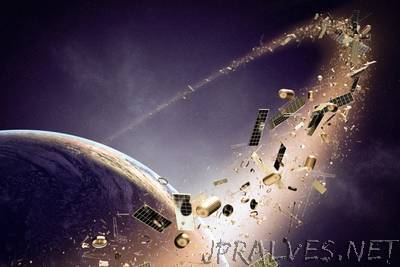
“Hundreds of millions of pieces of space junk orbit the Earth daily, from chips of old rocket paint, to shards of solar panels, and entire dead satellites. This cloud of high-tech detritus whirls around the planet at about 17,500 miles per hour. At these speeds, even trash as small as a pebble can torpedo a passing spacecraft. NASA and the U.S. Department of Defense are using ground-based telescopes and laser radars (ladars) to track more than 17,000 orbital debris objects to help prevent collisions with operating missions. Such ladars shine high-powered lasers at target objects, measuring the time it takes for the laser pulse to return to Earth, to pinpoint debris in the sky. Now aerospace engineers from MIT have developed a laser sensing technique that can decipher not only where but what kind of space junk may be passing overhead. For example, the technique, called laser polarimetry, may be used to discern whether a piece of debris is bare metal or covered with paint. The difference, the engineers say, could help determine an object’s mass, momentum, and potential for destruction. “In space, things just tend to break up over time, and there have been two major collisions over the last 10 years that have caused pretty significant spikes in debris,” says Michael Pasqual, a former graduate student in MIT’s Department of Aeronautics and Astronautics. “If you can figure out what a piece of debris is made of, you can know how heavy it is and how quickly it could deorbit over time or hit something else.” Kerri Cahoy, the Rockwell International Career Development Associate Professor of aeronautics and astronautics at MIT, says the technique can easily be implemented on existing groundbased systems that currently monitor orbital debris.”
